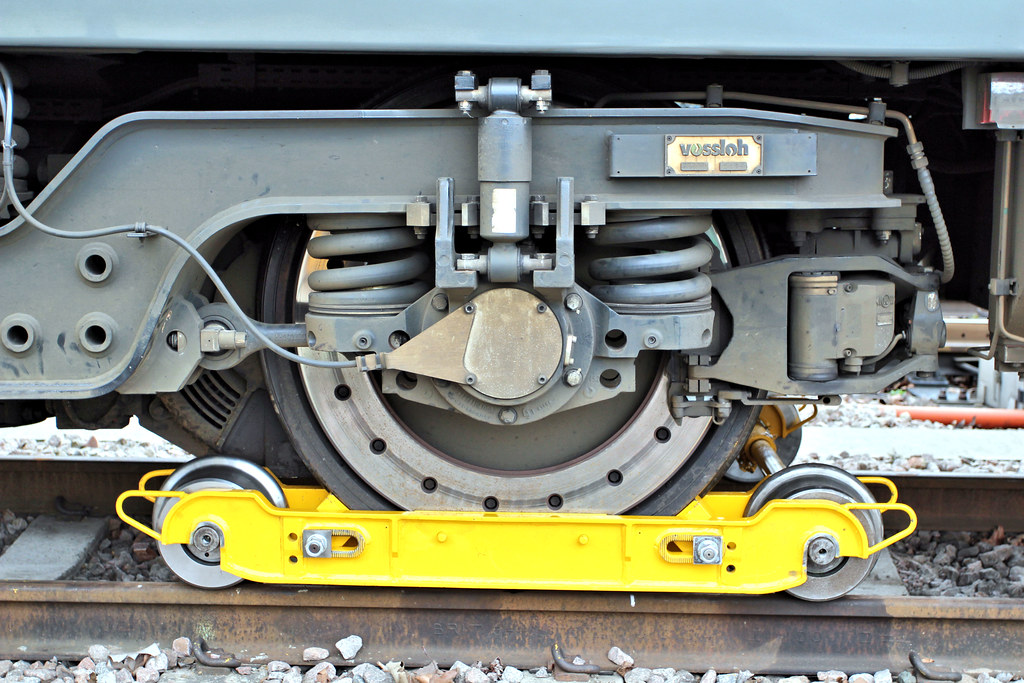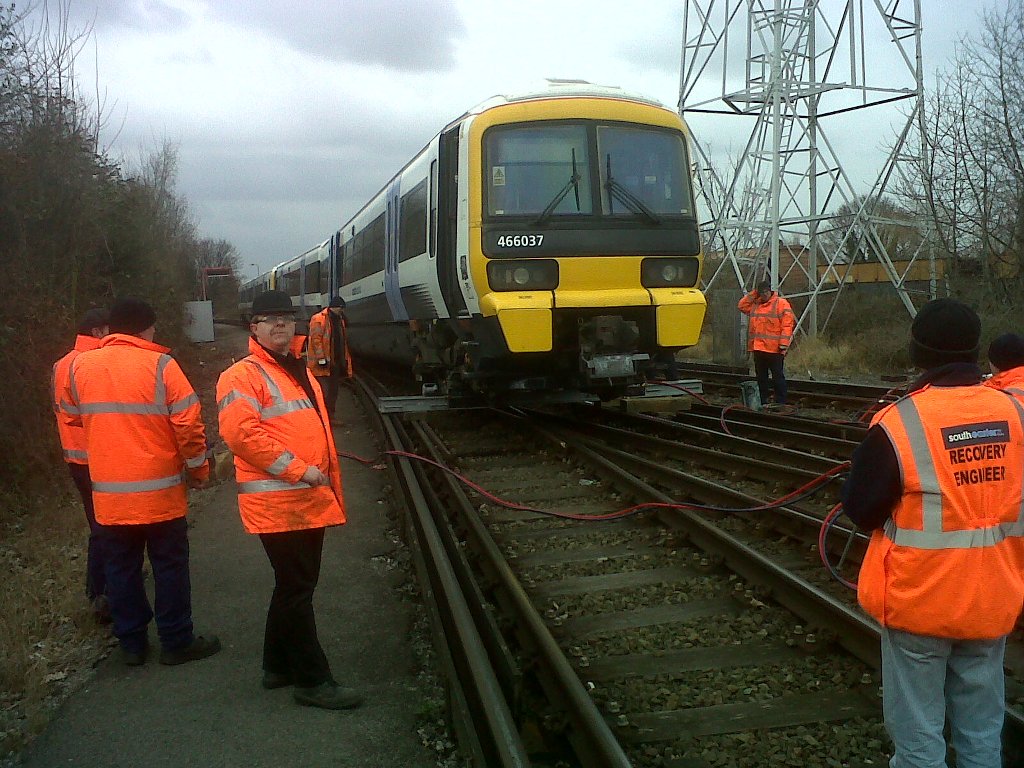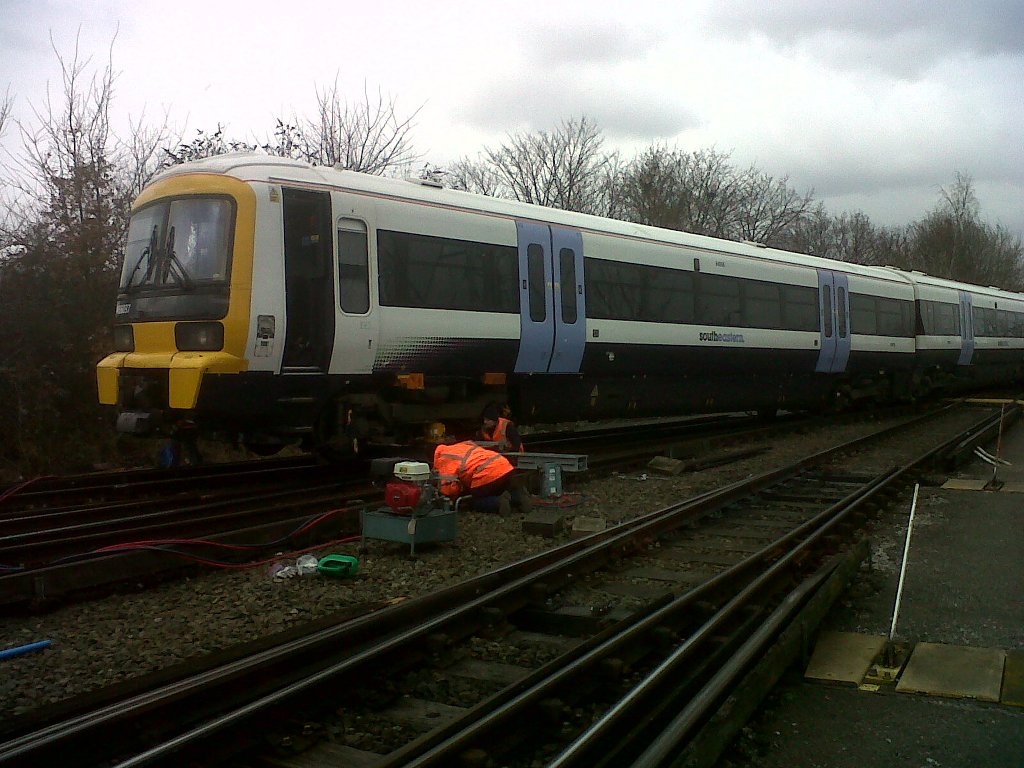Rambler2978
Member

The axle is lifted by jacks so that the wheels are clear of the rail and the jacks are supporting the weight of the vehicle, then the skate is assembled around the wheels and the side plates are clamped against the front and back of the wheel and then the jacks are lowered and the skate is now taking the weight of the vehicle. The train can now move, very slowly, with the small wheels of the skate running on the rail and the axle of the train not rotating.
Skates are used where the wheel, primary suspension, axle bearings etc. are damaged or are suspected of being damaged and the risk of driving the train normally, even at reduced speed, to a repair location is too great.
When I was an on-call FTO I'd attend incidents like this - a derailment on points in a yard - several times in each turn on the roster and that's without operating incidents on the line..


Many thanks for the photo! Much clearer now!!
Many thanks for the photo! Much clearer now!!
